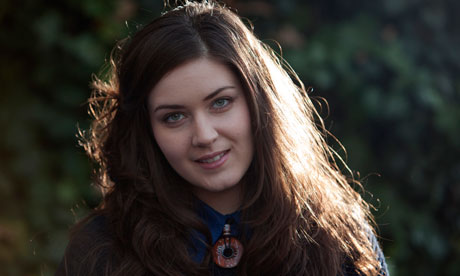
Charlene Soraia was 11 when she realised she didn't experience the world in quite the same way as most people. She was about to start secondary school and, turning to one of her friends, said that she pictured their first year as a series of "yellow lines, with green bits". "My friend said: 'What are you talking about?' And I thought: 'OK, I won't ever say anything else like that then.'"
A year or so later, Soraia, who is now 22, told her father she saw colours when she heard music. He explained that he experienced music the same way and that it was a medical condition called synaesthesia, in which the brain conflates two or more senses, causing both to be experienced at the same time.
A recent study by the University of Edinburgh concluded that around 4% of the British population has synaesthesia; other estimates put the figure at between 2% and 5%. The condition takes many forms: some experience tastes when they read or hear words; some perceive numbers as shapes; others, such as Soraia, see colours when they hear music, or when they think of particular periods in their lives.
"Tuesdays are always yellowish," says Soraia, a singer-songwriter who has just released her debut album, Moonchild. "Mondays are white. And numbers have shapes. Say I'm doing the times table, and it's 10 times five – I think of these 10 blocks, with five sections in each."
Soraia is talking to me in a cafe near her south London home; we plan to listen to a few songs together, so she can describe the way she experiences each one. She begins by explaining that she sees a range of colours according to the timbre of a musician's voice, or style of playing. "My dad's got an amazing tone when he plays guitar," she says. "It's really calming; like a burnt-orangey colour. My own voice, and album, is a sort of Oxford blue, with purple bits, like a dark cloud."
A disco track is jangling from the cafe's radio: what colours does that evoke? "Oh, that's a sort of deep red." And her favourite songs? Soraia taps her iPhone and chooses I Have Been Alone, an obscure track by the late-60s psychedelic group the Common People. "This is bluey-mauve, with white bits, and the violin's purple." Next up is Memories by Soft Machine, "a mustardy-yellow, like sepia". French Navy by Camera Obscura is "pillar-box red at night-time".
But Soraia's absolute favourite is David Bowie's Letter to Hermione. "It's navy blue underneath," she says, "but Bowie's voice is red. It's always been red. I remember when I was eight, and my dad played a Bowie album in the car. It was the first time I'd heard him, and I just got it in a way I'd never got music before. It was so intense."
What causes a synaesthete such as Soraia to experience music in this way?. While knowledge about the condition has improved greatly since the 80s, when most people who described such symptoms were dismissed as fantasists, its causes remain mysterious. "It's easier to describe what synaesthesia is not than what it is," says Dr Mary Spiller, a synaesthesia researcher and psychology lecturer at the University of East London. "It's not a mental-health problem, and it's not psychological. We know that it's about the brain causing senses to be joined together, and that there's often a genetic component: parents may pass synaesthesia to their children, though it may not always be the same type."
MRI brain scans have allowed researchers to prove that synaesthetes really do see colours when they hear music or words. "Scans have shown that the parts of the brain that are normally activated when we see colours actually become activated when synaesthetes hear words," says Spiller.
Is it important for someone who thinks they may have synaesthesia to seek medical advice? "Only if he or she feels it's having a negative impact," Spiller replies. "And I've met very few synaesthetes who feel that way."
Soraia certainly doesn't: her synaesthesia can be distracting, but she writes songs, she says, by "sitting inside a colour" (usually a shade of blue) and considers this an integral part of her songwriting process. There does seem to be a link between synaesthesia and creativity: David Hockney has a similar variety to Soraia; the artist Wassily Kandinsky, composer Olivier Messaien and writer Vladimir Nabokov are all believed to have been synaesthetes.
James Wannerton, president of the UK Synaesthesia Association, thinks that link is convincing . "I'm not creative myself – I work in IT," he says, "but I get a lot of emails from synaesthetes who are in the creative professions." Wannerton, who has the "taste" form of synaesthesia (he says my name "tastes of sliced apples"), says: "Synaesthesia can be difficult to live with. I can't really read books, as each word sets off a new taste; and I have to really concentrate when I'm driving, as road-signs do the same."
There is no cure for synaesthesia, but next year's UK Synaesthesia Association conference will include a speaker who claims to be able to reduce its effects. Would Soraia rather live without it? "I've accepted my synaesthesia. I just see it as an important part of who I am, and what I do."

